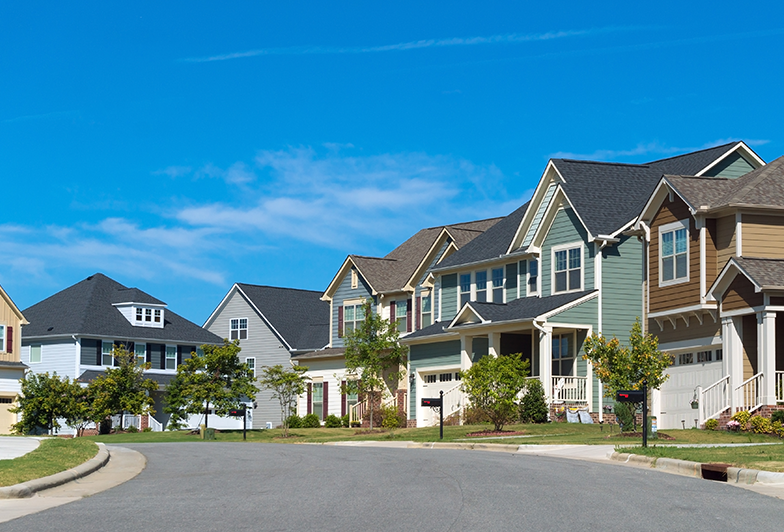Maximizing Returns: Investing in the Boom of Housing Construction Across U.S. Cities
We've said it before, but it's important enough to repeat: As we close out the old year, investor optimism is rising, and the real estate market in 2024 is looking bright! The number of housing starts will increase, and housing construction will begin to meet demand. This will be an excellent time for investors looking to diversify their portfolios.
Where to invest in real estate will be a pressing question, and we'd like to provide some direction by uncovering top real estate investment prospects in cities worth watching. Our analysis delves into the cities building the most housing units and provides insights to keep you ahead of the curve in your investment decisions.
Some Points To Ponder
The foundation for success lies in strategic real estate investments. In other words, do the research. Consider factors such as a property's growth and appreciation potential, location, nearby amenities, community development, market and population growth, and housing supply.
There are several points to consider when considering where to invest in real estate, but for the sake of brevity, we will focus on population growth and housing supply.
Housing Crisis in Numbers
After a decade of trending upward, new house construction dropped off in a significant way. The pandemic was messy and chaotic and keenly affected many industries, including construction. The price of goods increased dramatically, which was felt in the construction industry.
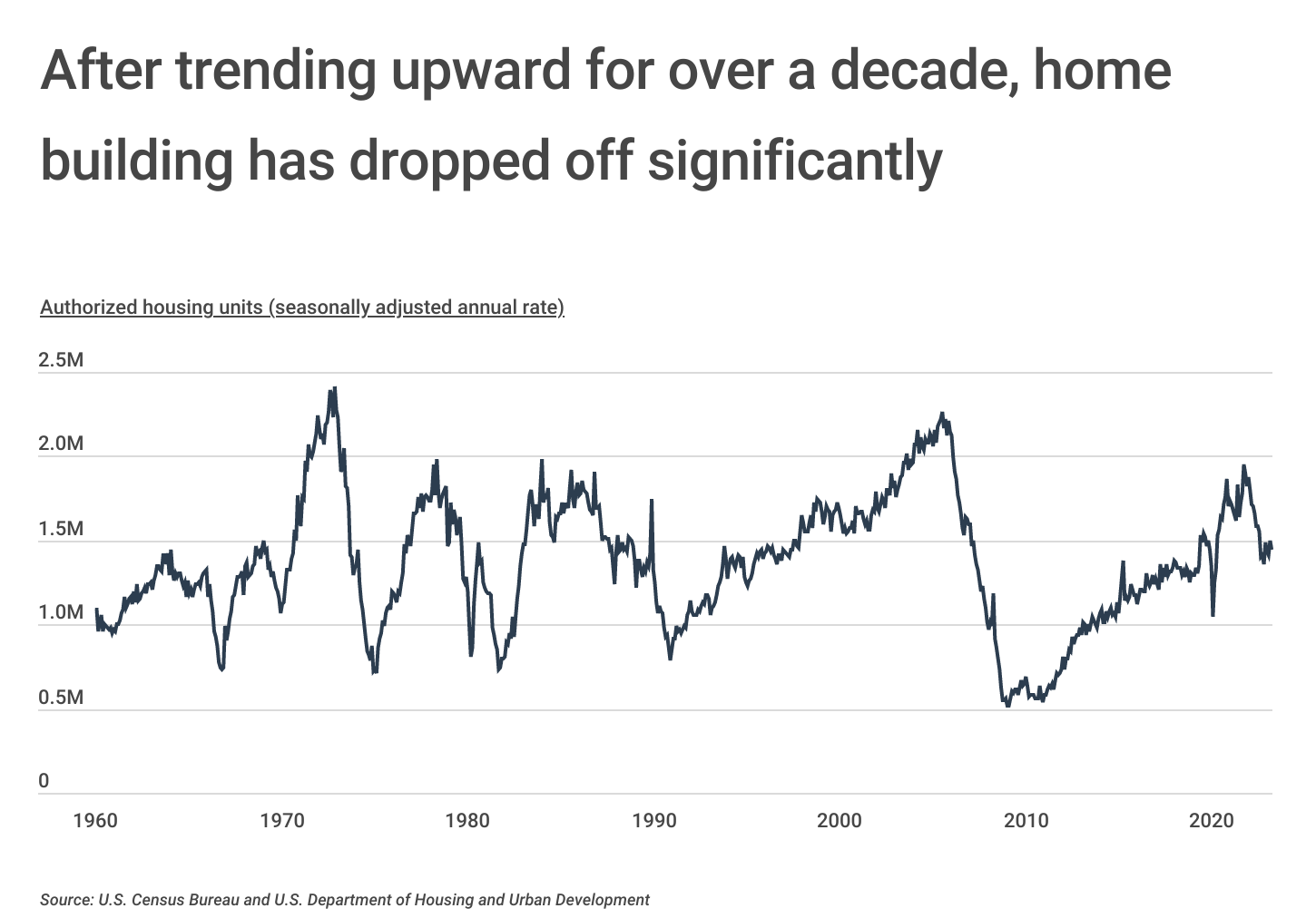
Source: Construction Coverage
According to the U.S. Forest Service, lumber nearly quadrupled in price during the first year of the pandemic. Labor shortages changed the timber industry and created a domino effect that affected the supply chain, driving prices skyward. Limited supply and the cost of materials stalled construction.
Housing prices soared due to the shallow inventory pool and competition for the existing homes was fierce. Real estate construction plans and projects experienced significant delays due to the shortages of workers and supplies.
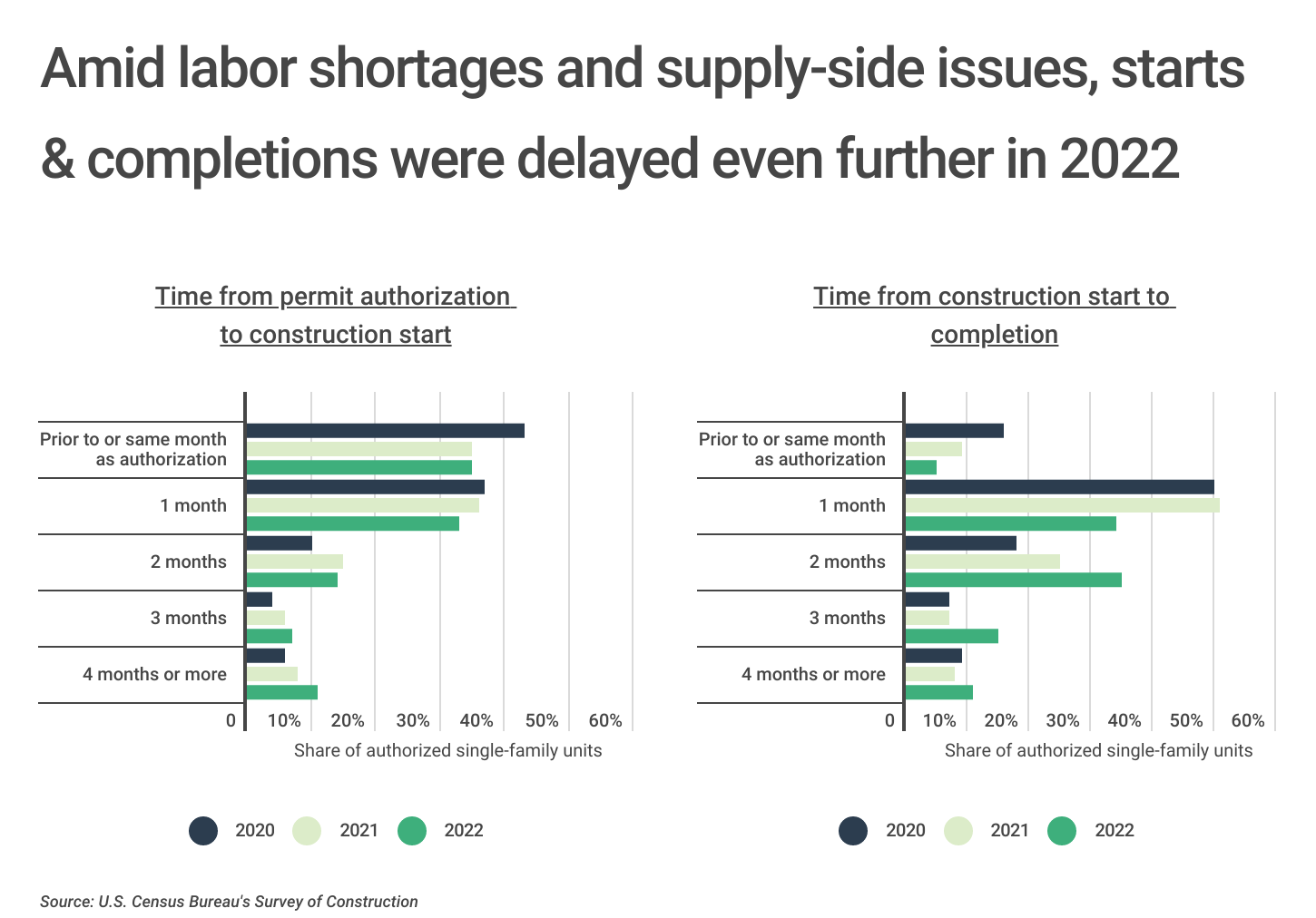
Source: Construction Coverage
The pandemic, combined with underbuilding in relation to population growth, has us heading into 2024 with a shortage of 6.5 million homes. That's the bad news. The good news is that lumber prices have dropped, construction permitting processes are being simplified, interest rates are predicted to decline, and local and federal governments are prioritizing housing. This puts buyers and investors in a position of power.
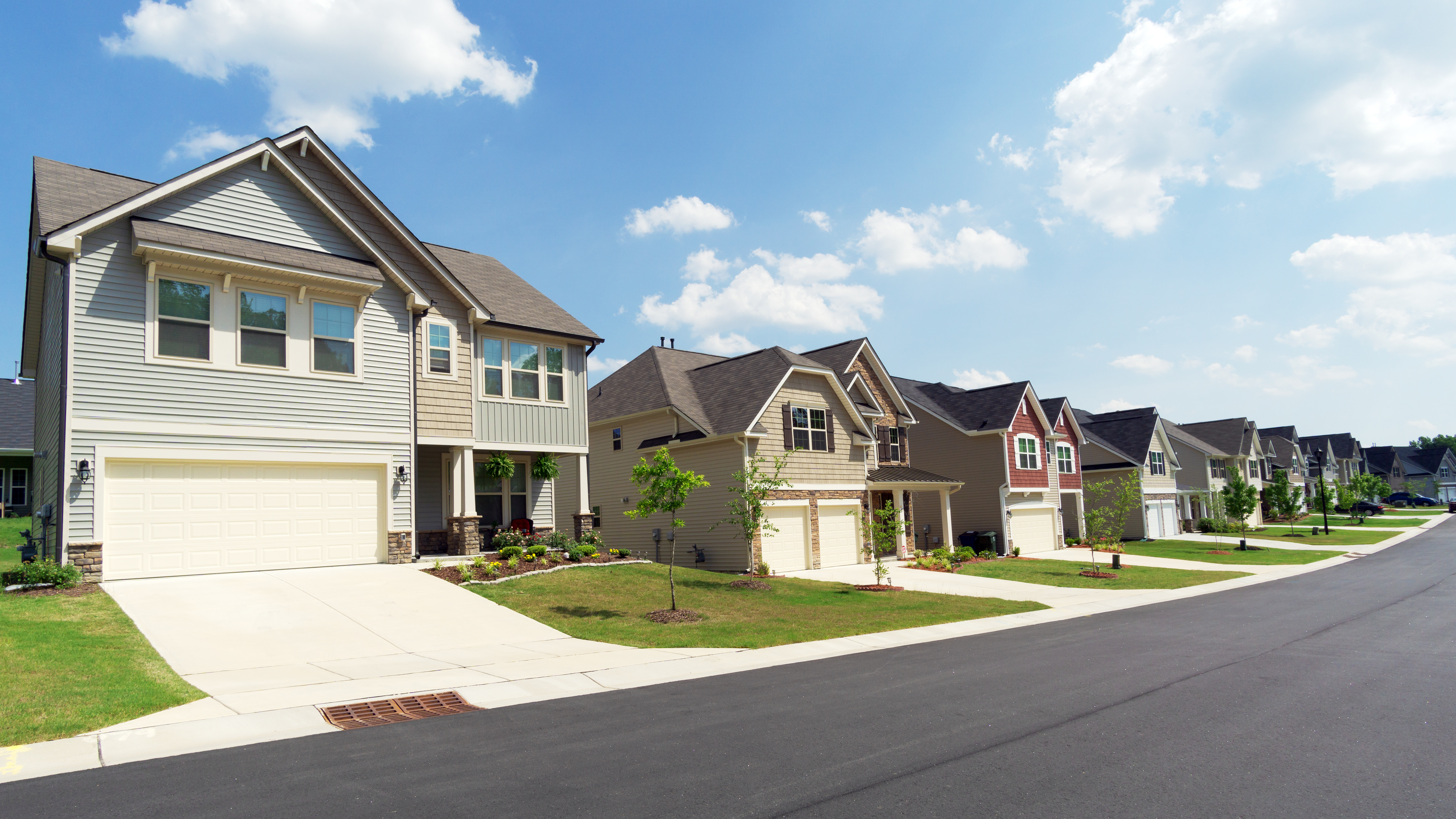
Markets Building the Most Single-Family Units
In November, single-family housing construction, which accounts for the bulk of home building, jumped by 18%, adding over just 1 million units. Permits for future construction increased to 976,000 units. This is a move in the right direction.
The number of single-family homes for sale is currently hovering around 1.3 million - 8.1% above the all-time recorded low in February 2022. This isn't great, but some areas of the country are undertaking a construction boom. Let's look at some cities building faster than the rest of the U.S.
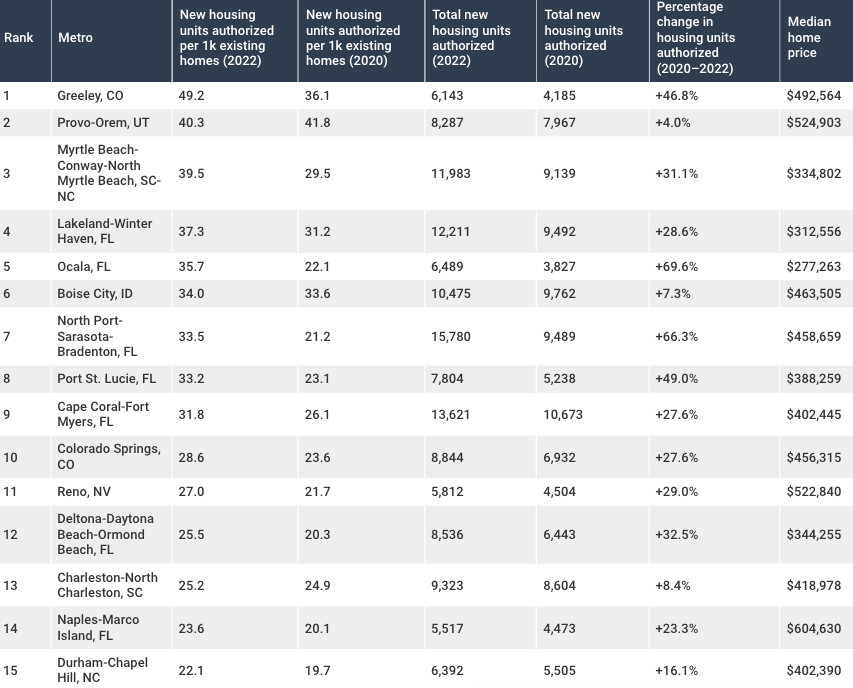
Source: Construction Coverage
Greely, CO, a city of just over 100,000, leads with 49.2 housing units per 1,000 existing housing units. In the two years between 2020 and 2022, there was a 46.8% jump in the number of authorized units.
Provo-Orem, in Utah, came in a close second with 40 housing units per 1,000 existing units. Reno, NV, is keeping pace with 27 housing units per 1,000 existing units.
Several mid-sized metro areas in Florida also saw significant percentage changes in housing units authorized between 2020 and 2022. Ocala and Northport-Sarasota-Bradenton lead the way with positive changes of 69.6% and 66.3%, respectively.
One of the surprises from the chart might be Akron, Ohio, with a 233.4% change in the number of authorized housing units. In 2021, Akron was listed as one of the top 20 home-buying markets. The cost of living is low, and the average house price, while up 4.6% from last year, is still comparatively low at $120,250.
Some large metro areas ranked among the fastest-growing cities in the U.S., and topping the chart is Austin-Roundrock-Georgetown, TX. New housing units per 1,000 existing units is 42.5. They were followed closely by Raleigh-Cary, NC, at 36.2, a significant percentage change in housing units authorized.
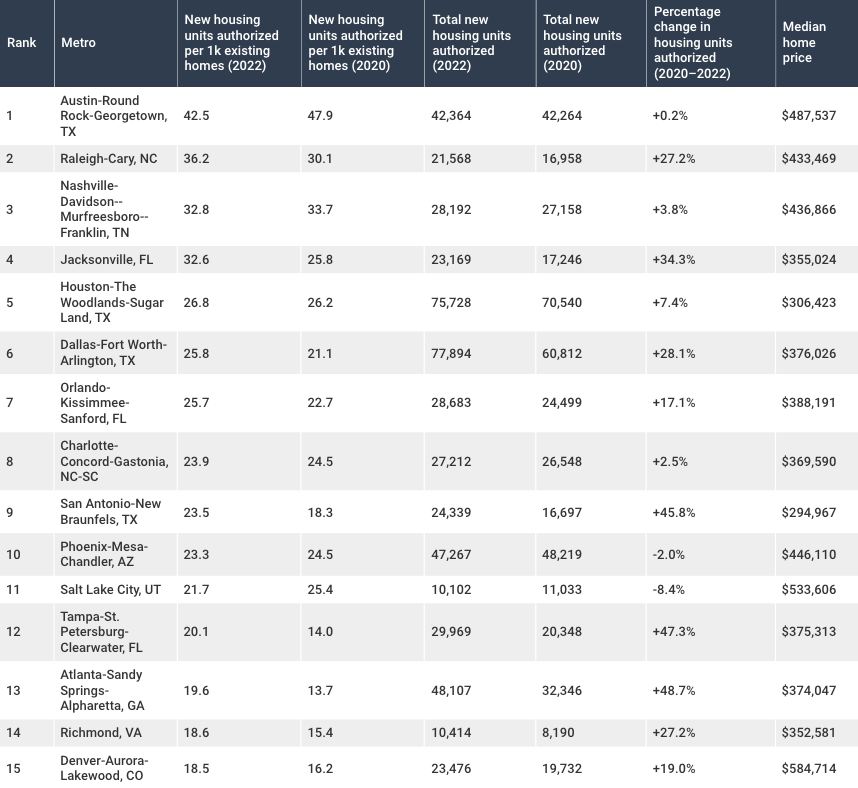
Source: Construction Coverage
We have all read about high housing prices in CA, but despite the sticker price, areas such as Los Angeles, San Francisco, and Fresno are in the double digits for percentage change in housing units authorized.
Markets Building the Most Multi-Family Housing
A 2019 American Housing Survey and the Census Bureau survey showed that 31%, or 43.9 million people, live in multi-family housing units. This type of housing includes apartments, condominiums, townhouses, and mixed-use developments.
There is also a trend where younger people and families forego buying a house and choose to rent instead. According to the National Multi-family Council and National Apartment Association, 4.3 million new apartments will be needed in the next 12 years to meet the demand.
The positive news is that apartment construction is on the rise. In the two years from 2020 to 2022, 700,000 units were built, and another estimated 700,000 units were completed in 2023.
Let's highlight a few large and mid-sized metro areas from the tables below that are noteworthy for their multi-family housing growth.
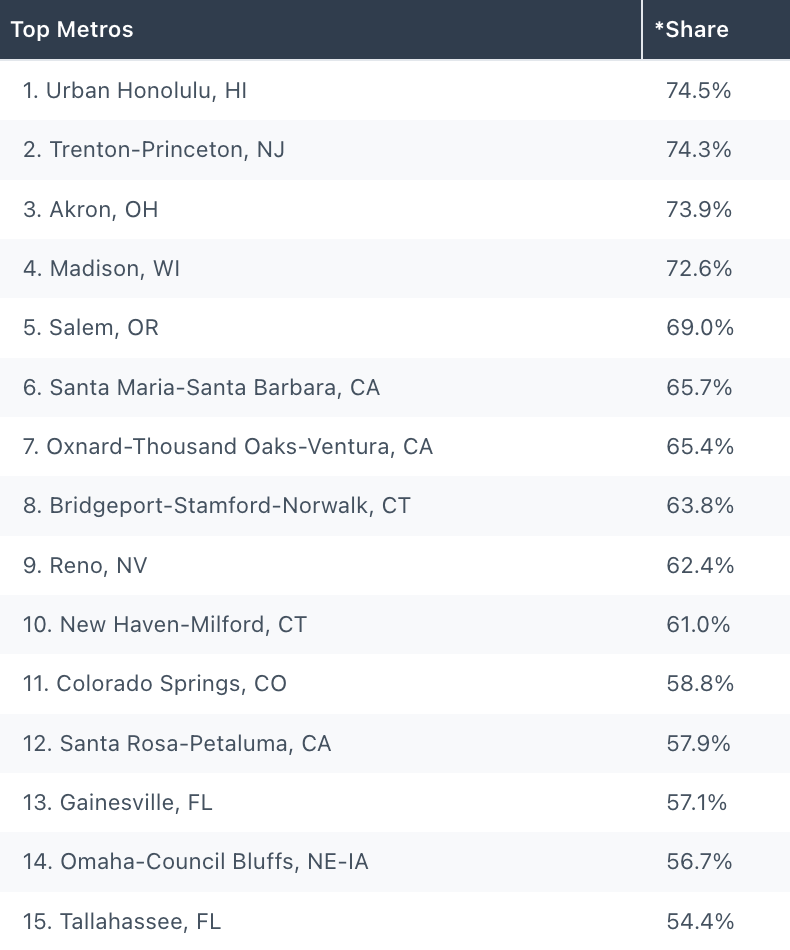
Source: Construction Coverage
Urban Honolulu (HI), Trenton-Princeton (NJ), Akron (OH), and Madison (WI) are all running neck and neck for the top spot in the mid-sized category. The share of new housing units in multi-family structures for these cities ranges from 74.5% to 72.6%. Reno, NV comes in at 62.4%, and Colorado Springs, CO at 58.8%.
It isn't surprising to most that States like NY, MA, and NJ had increased authorizations for multi-family housing units. The twist is that the construction boom has extended to traditionally quieter areas. South Dakota, Washington, Minnesota, Nebraska, Colorado, and Montana are all now exceeding 50%.
In large metro areas, the New York-Newark-New Jersey area claims the top spot with a 79.3% share. Seattle-Tacoma-Bellevue and Boston-Cambridge-Newton are close behind with shares of 73.6% and 72.4% respectively.
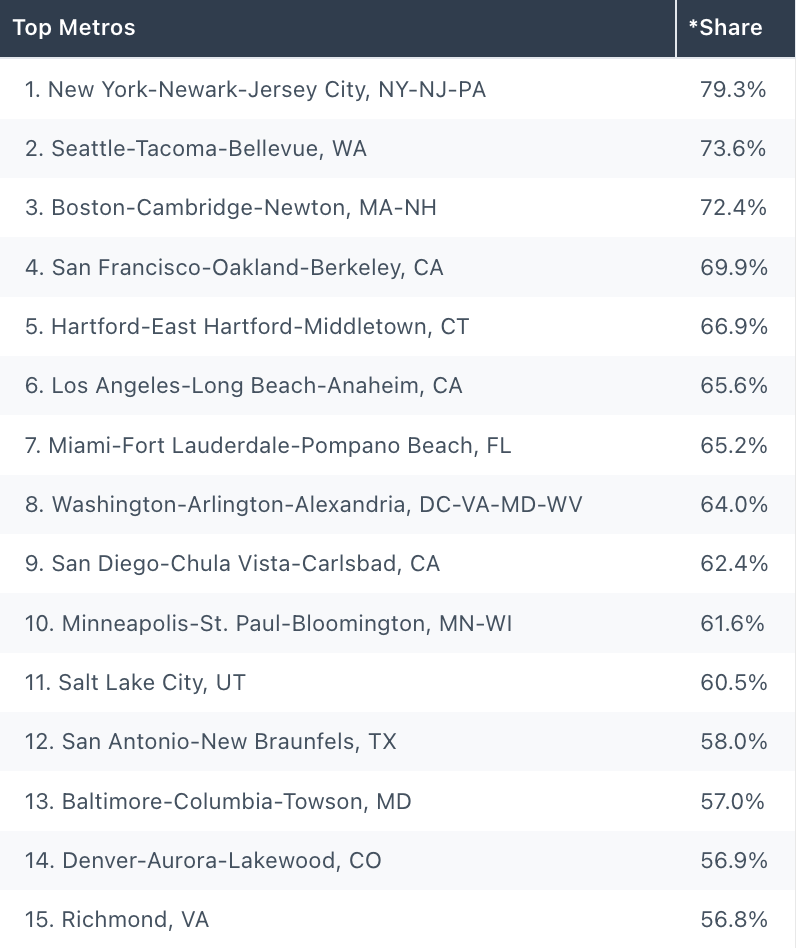
Source: Construction Coverage
You can see that three California areas are among the top 10, and Salt Lake City, Utah, is comfortable at number 11.
This incredible data, compiled by Construction Coverage, gives real estate investors a solid idea of the markets one should invest into. Connect Invest's Short Note portfolio includes several residential projects across states highlighted in this construction boom data, including Nevada, Colorado, Utah, Texas, and Washington.
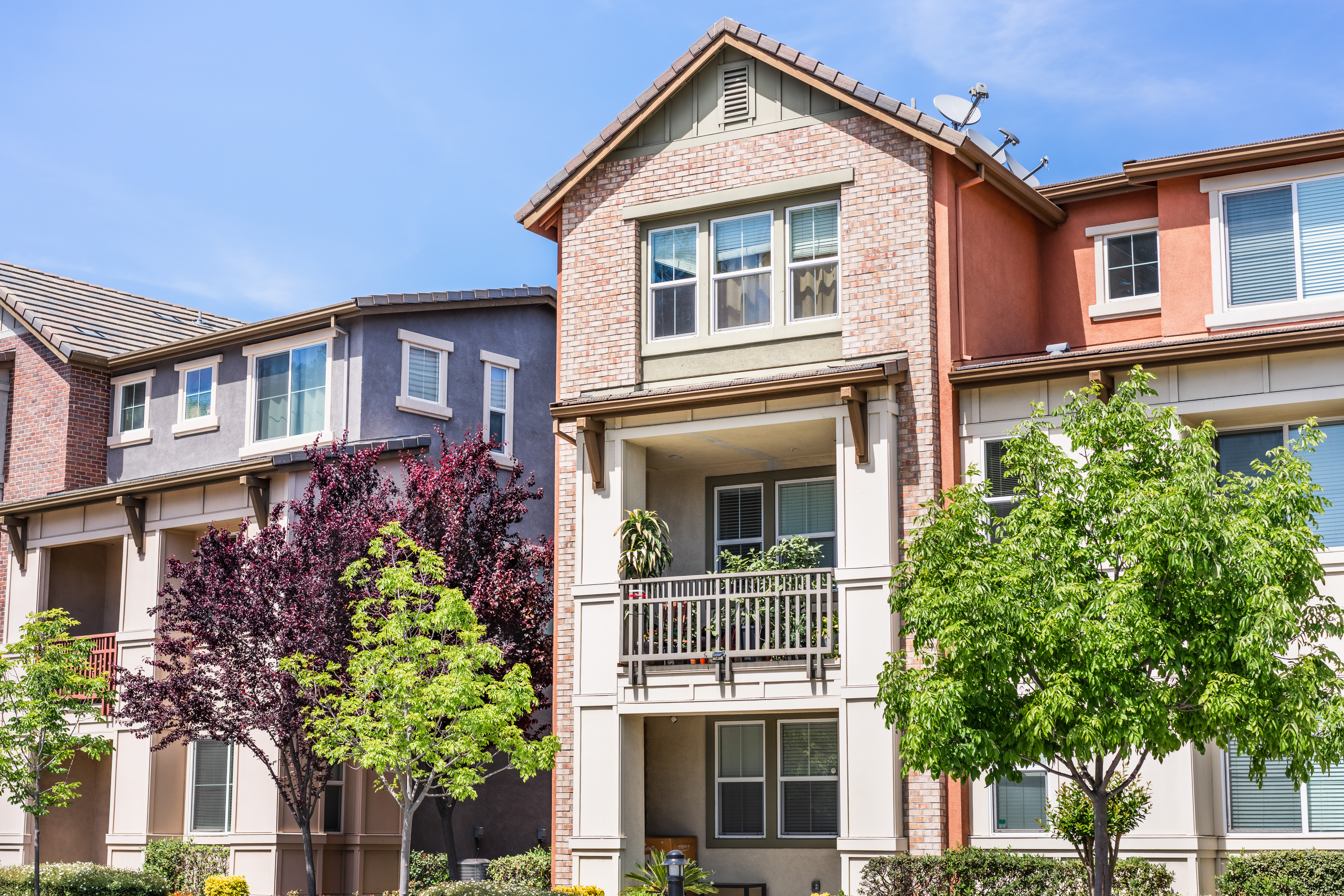
State-to-State Migration Explodes
According to U.S. Census data, 8.2 million people moved from state to state in 2022. More people in the South and West made this type of move, and the States with the highest migration flow saw people moving from one highly populated area to another.
The American Housing Survey revealed that in 2022, roughly 2.5% of Americans found themselves living in a different State than they had the year before. This was a slight increase over 2021 and higher than 2018 and 2019, when the rate was around 2.3%.
These migrations have ripple effects on the real estate market. For example, Texas saw the lowest number of people leaving the state. The city of Austin once had a booming housing market, but now prices are dropping faster than the national average due to the decline in demand.
And, of course, the opposite is true in cities where migration has been strong. Raleigh, NC has seen a median house price that is 6.7% higher year over year. Florida is another State that has seen a significant influx of new residents, and housing prices, while currently beginning to flatline, have steadily increased.
These kinds of statistics are strategic information that investors need to consider.
How Can Investors Take Advantage of Hot Spots?
With the construction permit process becoming less restrictive and single and multi-family housing starts predicted to rise, this is a great time to get into real estate investing. Connect Invest's team of experts thoroughly researches and vets all their investment projects, and our list of criteria is comprehensive.
Our short notes fund a diversified portfolio of commercial and residential real estate properties in the acquisition, development, and construction phases. Connect Invest's transparent model eliminates the stress of undertaking market research and investment monitoring.
Signing up takes just a few minutes, and the minimum investment is as low as $500. There are no fees, no overhead, and investments are highly liquid. Begin earning passive income and higher-than-average returns.
Our team will be happy to answer any questions – contact us today!

